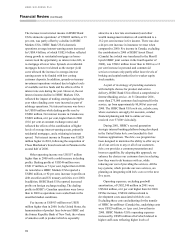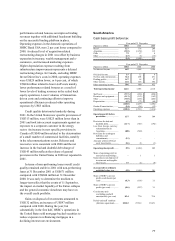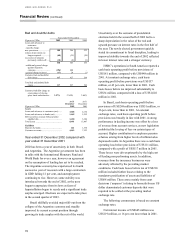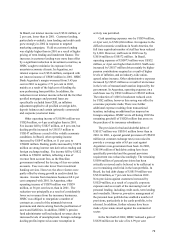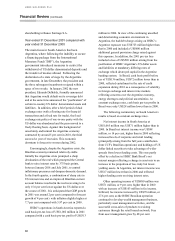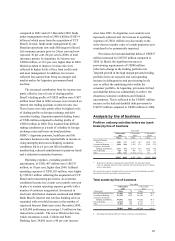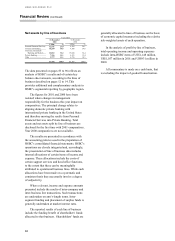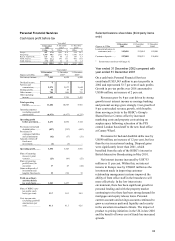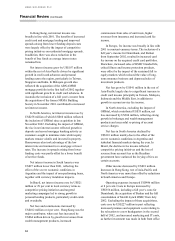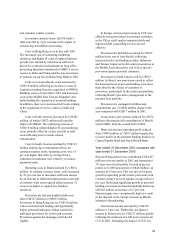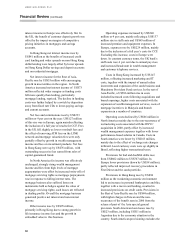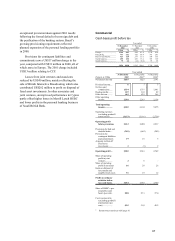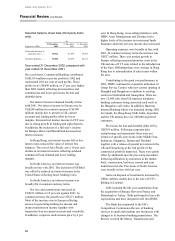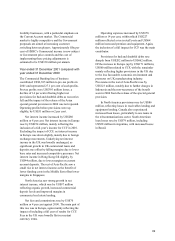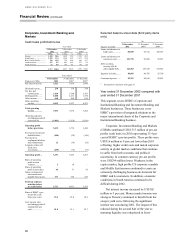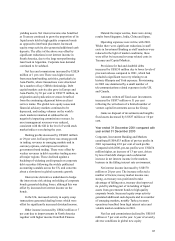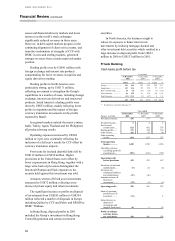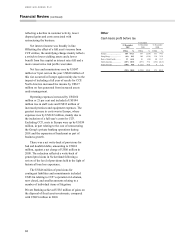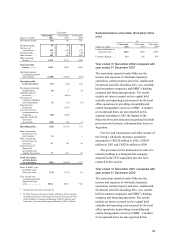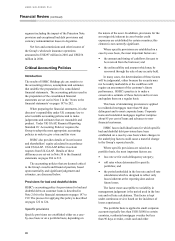HSBC 2002 Annual Report Download - page 88
Download and view the complete annual report
Please find page 88 of the 2002 HSBC annual report below. You can navigate through the pages in the report by either clicking on the pages listed below, or by using the keyword search tool below to find specific information within the annual report.
HSBC HOLDINGS PLC
Financial Review (continued)
86
interest income in Europe was effectively flat. In
the UK, the benefit of customer deposit growth was
offset by the impact on margins of competitive
pricing initiatives in mortgages and savings
accounts.
In Hong Kong net interest income rose by
US$41 million as the benefits of increased credit
card lending and wider spreads on non-Hong Kong
dollar lending were largely offset by lower spreads
on Hong Kong Dollar savings and deposit accounts
and on residential mortgages.
Net interest income for the Rest of Asia-
Pacific rose by US$53 million with encouraging
growth in most entities in the region. In North
America increased net interest income of US$73
million reflected wider margins as funding costs
fell more quickly than lending, particularly
mortgage lending, repriced. The decline in funding
costs was further helped by a switch by depositors
away from fixed rate CDs to lower-paying savings
and current accounts.
Net fees and commissions rose by US$233
million or 9 per cent on the year. US$127 million
of this rise was in Europe, again mainly reflecting
the inclusion of a full year of results for CCF. Fees
in the UK fell slightly as lower overdraft fees and
the effect of removing ATM fees on the LINK
network and mortgage valuation fees were only
partially offset by growth in wealth management
income and fees on investment products. Net fees
in Hong Kong were up by US$76 million, with
outstanding success in fees earned from sales of
capital-guaranteed funds.
In North America fee income was effectively
unchanged; strongly rising wealth management
income and fees from high levels of mortgage
augmentation were offset by increased write-offs of
mortgage servicing rights as mortgage prepayments
rose in response to falling interest rates. The
mortgage business also suffered losses on
instruments held as hedges against the value of
mortgage servicing rights; such losses are reflected
in dealing profits. Overall the mortgage business
generated positive net interest and non-interest
income.
Other income rose by US$95 million,
primarily in Hong Kong due to strong growth in
life insurance income fees and the growth in
embedded value in this business.
Operating expenses increased by US$240
million or 4 per cent, mainly reflecting a US$137
million rise in staff costs and US$43 million of
increased premises and equipment expenses. In
Europe, expenses rose by US$229 million, mainly
due to the inclusion of a full year’ s costs for CCF.
Excluding this increase, costs in Europe were
down. In constant currency terms, the UK bank’s
staff costs rose 4 per cent due to annual pay rises
and increased headcount in wealth management
and customer telephone services.
Costs in Hong Kong increased by US$147
million, reflecting increased marketing and IT
costs, together with the impact of annual salary
increments and expansion of the cards business and
Mandatory Provident Fund services. In the rest of
Asia-Pacific, a US$96 million rise in costs
included increased costs following acquisitions and
branch openings, higher costs associated with the
expansion of wealth management services, costs of
mortgage incentives in Malaysia and branch
expansion in a number of countries.
Operating costs declined by US$66 million in
North America mainly due to the non-recurrence of
restructuring costs associated with the RNYC
acquisition in 2000, partly offset by increased
wealth management expenses together with lower
performance-based salaries in Canada. Costs in
South America were lower by US$165 million,
mainly due to the effect of exchange rate changes
in Brazil. Local currency costs were up slightly in
Brazil, reflecting higher transactional taxes.
Provisions for bad and doubtful debts rose
from US$602 million to US$767 million. In
Europe lower provisions (down by US$58 million),
partly reflected improved recovery procedures in
First Direct and the cards portfolio.
Provisions in Hong Kong rose by US$94
million as the weakening economic environment
led to an increase in personal bankruptcies and this,
together with a rise in card lending, resulted in
increased provisions on credit cards. Provisions in
the Rest of Asia-Pacific rose by US$84 million,
with higher charges in Taiwan and the non-
recurrence of the benefit seen in 2000 from the
release of part of the Asia special general
provision. South American loan losses rose by
US$23 million, including US$11 million in
Argentina due to the economic situation in the
country. South American provisioning excludes the


